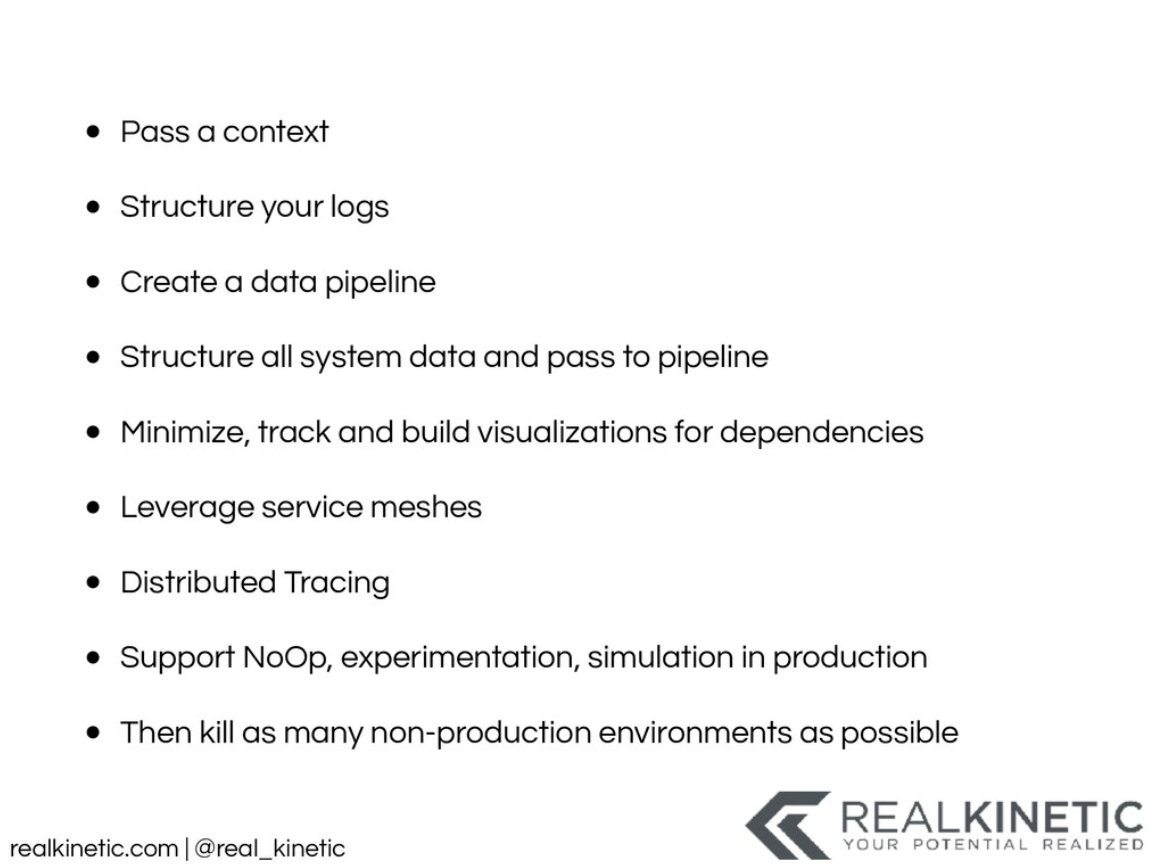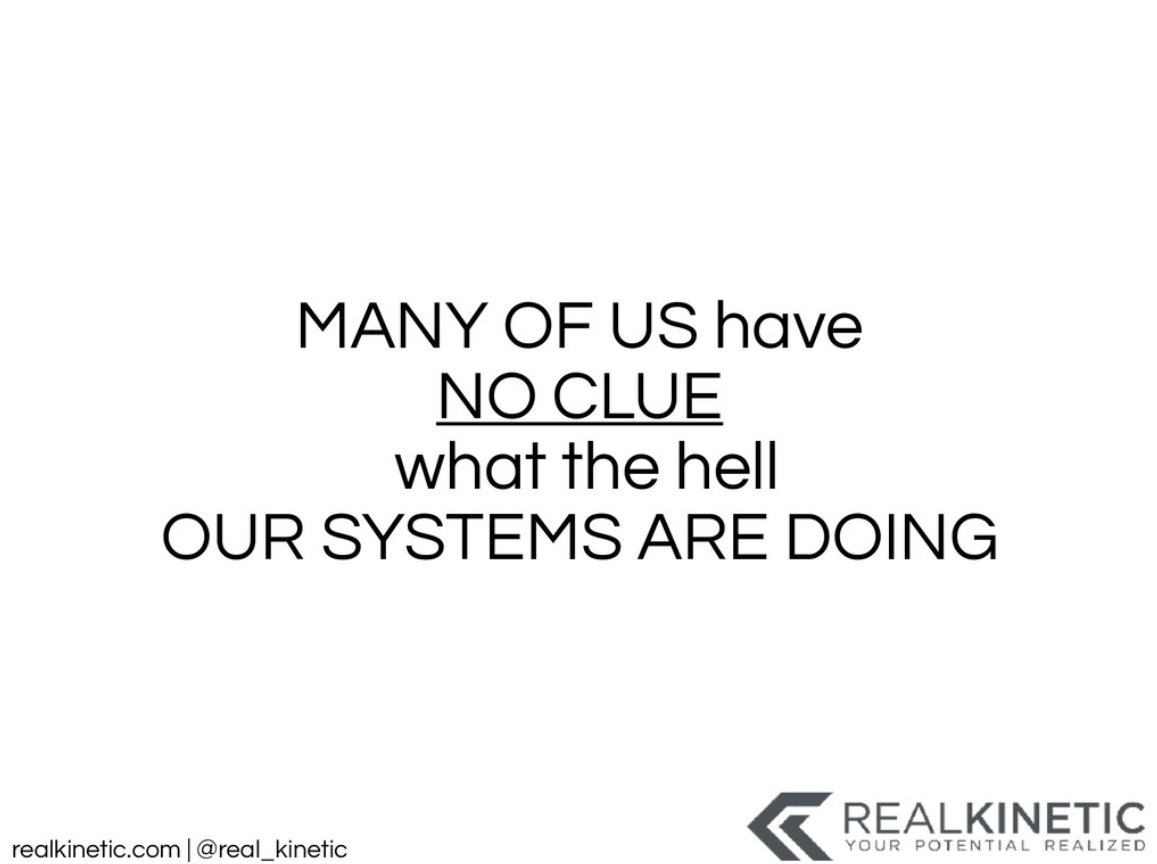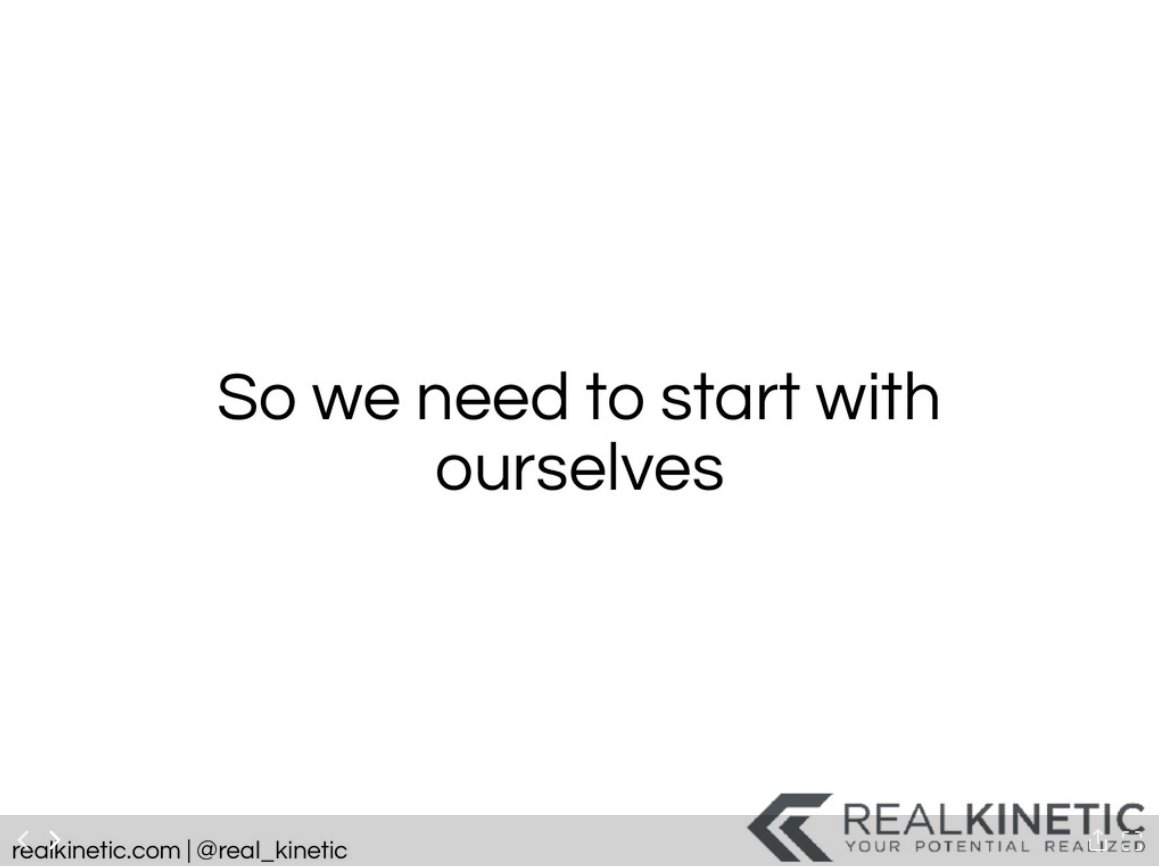and not because it's been called a "30-min ad for @honeycombio", but because it's a master class in software engineering and technical leadership for the era of distributed systems.
we laugh at "normal people" misunderstanding tech, but that's actually *our* failure to explain it. and a backlash is brewing. (GDPR, the FBI on encryption, etc).
<<hilarious historical detour into the past 20 years of systems architectures>> tldr: don't microservice til you have to, you won't microsurvive [ed: my joke]
so let's talk about complexity and how to deal.
["structure",
"your",
"fucking",
"data"]
structure it more
for the system to keep up with understanding the systems we need the systems to *self describe* their state and health.
the ability to route, filter, drop, return custom error codes, degrade service etc per unique tenant is basically necessary for your survival as a platform.
STRUCTURE YOUR [FUCKING] LOGS
fuck writing regexes bc we're too lazy to add structure at the time it actually makes the most sense, and could save us the most amortized pain. start with good hygiene now bc microservices will *kill you* otherwise
clients: console.log -> google analytics && BI
services: tail -f -> splunk -> nagios && BI
storage: gnarly shell commands -> datadog && nagios
.. but now your non critical path has a bazillion systems
where should the data go? at minimum, a cheap long term solution like glacier: forever.
"THIS IS WHY WE STRUCTURE OUR LOGS"
there are also other options. [insert a few honeycomb slides about high cardinality data and other capabilities] but the bottom line is: "start to think like scientists. like data people."
"share, collaborate"
... there are also many other non-honeycomb options, still a bit too dashboard-based but probably moving in the right direction.
(ahem structure your data)
(shits on golang a bit, damns with faint praise, shows some terrific diagrams demonstrating the cost of freewheeling dependencies)
TEST IN PRODUCTION
tracer bullets, feature flags, tester accounts ... all these are necessary prereqs to the holy grail, which is to stop flushing years of our lives down useless staging environments in the name of "safety" [ed: ahahahha ha ha]
(@lyddonb if you DM your address and shirt size i will send you an "I TEST IN PROD" t-shirt. thank you for this talk!)


















